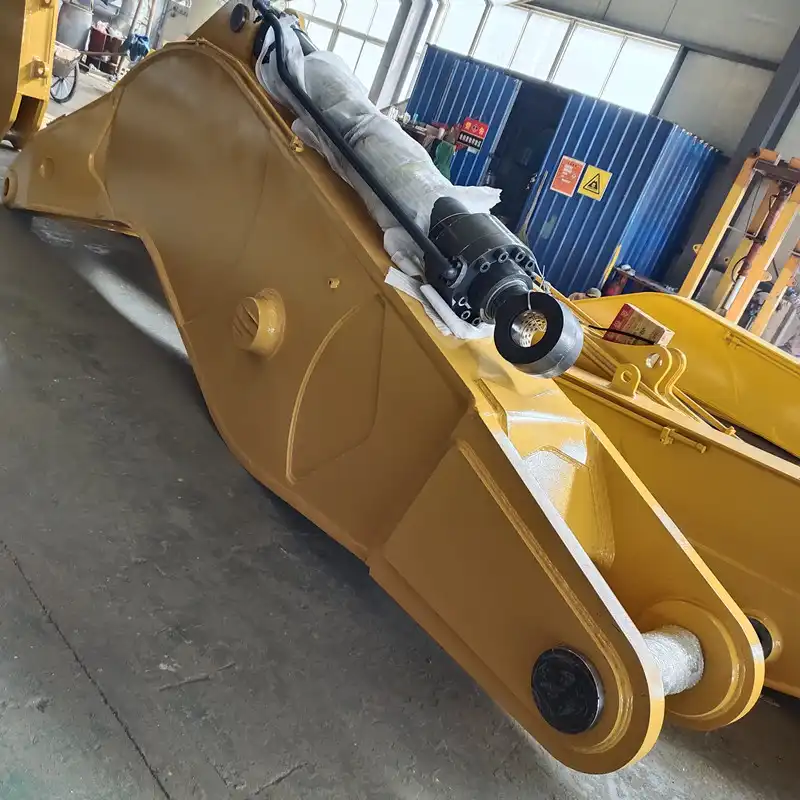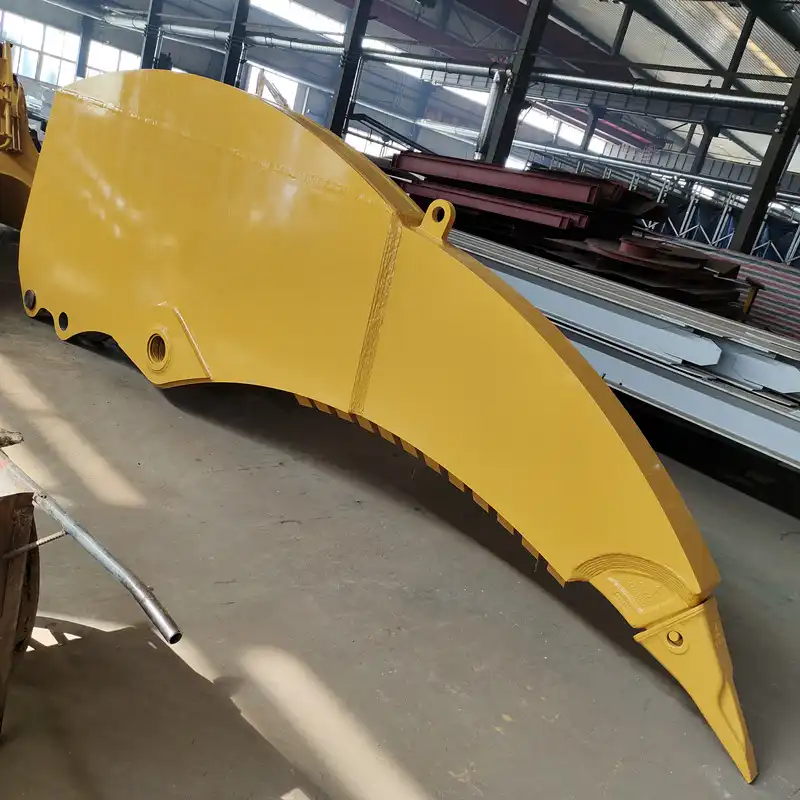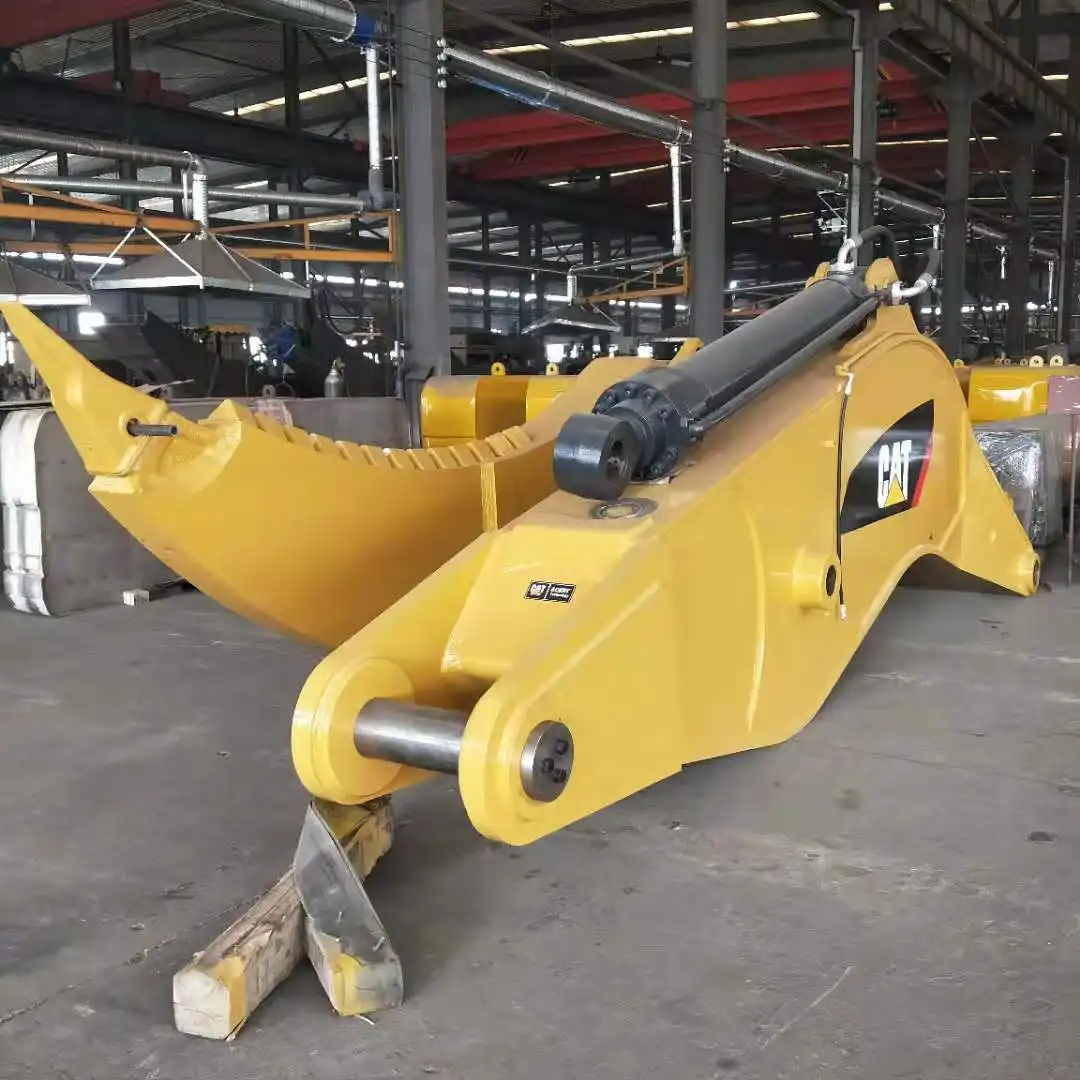Can an excavator arm dig through rock?
The answer is a resounding yes – excavator arms can indeed dig through rock, but success depends heavily on the type of equipment you choose. A specialized excavator rock arm transforms your standard excavator into a powerful rock-breaking machine capable of handling even the toughest geological formations. Unlike conventional excavator arms designed for soil and lighter materials, rock arms feature reinforced construction, enhanced hydraulic systems, and specialized attachments that enable them to penetrate limestone, sandstone, shale, and other challenging rock types.

Dig Through Rock
Rock Excavation Capabilities
Rock excavation represents one of the most demanding applications in construction and mining industries. The ability to break through solid rock formations depends on several critical factors including rock hardness, equipment power, and attachment design. Excavator rock arms are specifically engineered to handle these challenging conditions through enhanced structural integrity and specialized hydraulic systems.
Different rock types present varying levels of difficulty for excavation equipment. Soft sedimentary rocks like limestone and sandstone typically yield more easily to mechanical excavation, while harder igneous rocks such as granite require more aggressive approaches. The Mohs hardness scale provides a useful reference point – rocks with ratings below 4 can usually be excavated directly, while harder materials may require pre-weakening through controlled blasting or specialized breaking techniques.
Specialized Rock Arm Engineering
The engineering behind effective rock excavation goes far beyond simply making equipment bigger and stronger. Modern excavator rock arms incorporate advanced metallurgy, optimized geometry, and sophisticated hydraulic systems to maximize breaking force while maintaining operational efficiency. These arms feature reinforced welding, thicker steel plates, and strategic stress distribution to withstand the tremendous forces generated during rock breaking operations.
Hydraulic system optimization plays a crucial role in rock arm performance. Higher operating pressures, larger cylinder diameters, and enhanced flow rates combine to deliver the sustained power necessary for continuous rock excavation. The hydraulic system must maintain consistent performance even under extreme loads, ensuring operators can maintain productivity throughout demanding work cycles.
Attachment Selection and Configuration
The choice of attachment dramatically influences rock excavation success. Rock buckets feature reinforced cutting edges, replaceable wear plates, and specialized tooth configurations designed to penetrate and break apart solid rock. Ripper attachments concentrate force into narrow points, creating fractures that can then be exploited by conventional buckets. Hydraulic breakers deliver high-impact forces that can shatter even the hardest rock formations.
Proper attachment selection depends on rock characteristics, project requirements, and environmental constraints. Dense, hard rocks often respond better to impact-based breaking methods, while softer formations may be effectively excavated using aggressive bucket configurations. Understanding these relationships enables operators to optimize their approach for maximum efficiency and minimal equipment wear.

Machine Size and Power Matter
Power-to-Weight Ratios in Rock Excavation
The relationship between excavator size and rock excavation capability isn't simply linear – it's about optimizing power delivery, weight distribution, and operational efficiency. Larger excavators don't automatically guarantee superior rock breaking performance; rather, the configuration of hydraulic systems, arm geometry, and attachment selection determines actual capability. Excavator rock arms must be properly matched to their carrier machines to achieve optimal performance.
Medium-sized excavators in the 20-40 ton range often represent the sweet spot for many rock excavation applications. These machines provide sufficient power for effective rock breaking while maintaining the mobility and fuel efficiency essential for sustained operations. Their hydraulic systems can generate the consistent high pressures necessary for rock arm operation without overwhelming the machine's structural limits.
Hydraulic System Requirements
Rock excavation demands exceptional hydraulic performance that goes well beyond standard excavator capabilities. The hydraulic system must deliver sustained high-pressure flow to maintain consistent breaking force throughout extended work cycles. Standard excavator hydraulic systems typically operate at pressures around 350 bar, while rock excavation applications may require systems capable of 400+ bar operation.
Flow rate becomes equally critical in rock excavation applications. Higher flow rates enable faster cycle times and more aggressive breaking action, directly translating to improved productivity. The hydraulic system must balance pressure and flow to optimize both breaking force and operational speed, ensuring maximum efficiency in challenging rock formations.

Digging Through vs. Breaking Up
Mechanical Excavation Techniques
The distinction between "digging through" and "breaking up" rock represents fundamentally different approaches to rock excavation, each with specific applications and equipment requirements. Digging through rock involves continuous excavation similar to soil operations, requiring specialized excavator rock arms with enhanced durability and power. Breaking up rock, conversely, involves fracturing large formations into manageable pieces that can then be handled by conventional equipment.
Continuous digging through rock formations demands equipment capable of sustained high-force operation. This approach works best with softer rock types where the excavator can maintain steady progress without excessive wear or operational interruption. The technique requires careful attention to bucket loading, cycle times, and equipment maintenance to ensure consistent productivity.
Impact-Based Rock Breaking Methods
Impact-based breaking methods utilize concentrated force delivery to fracture rock formations through strategic force application. Hydraulic breakers, ripper attachments, and specialized breaking tools create fractures that weaken the rock structure, making subsequent excavation more efficient. This approach often proves more effective with harder rock types that resist continuous excavation methods.
The timing and positioning of impact forces significantly influence breaking effectiveness. Operators must identify natural fracture lines, weakness planes, and stress concentrations to maximize breaking efficiency. Proper technique can reduce the total energy required for rock removal while minimizing equipment wear and operational costs.
FAQ
①What types of rock can excavator arms handle?
Excavator rock arms can handle various rock types including limestone, sandstone, shale, frozen soil, and siltstone. Success depends on rock hardness, equipment specifications, and proper technique. Softer sedimentary rocks are generally easier to excavate than harder igneous formations.
②How do I know if my excavator needs a rock arm?
If your project involves frequent encounters with rock formations, requires breaking through solid rock layers, or demands sustained high-force excavation, a specialized rock arm will significantly improve efficiency and reduce equipment wear compared to standard arms.
③What maintenance is required for rock arms?
Rock arms require regular inspection of hydraulic systems, structural welds, and attachment points. Daily greasing, hydraulic fluid monitoring, and wear plate inspection help maintain optimal performance. More frequent maintenance intervals are typically necessary due to the demanding operating conditions.
④Can rock arms be retrofitted to existing excavators?
Many excavators can be retrofitted with rock arms, but compatibility depends on hydraulic capacity, structural strength, and weight distribution. Professional evaluation ensures proper matching between the excavator and rock arm specifications for safe and effective operation.
Understanding excavator rock arm capabilities transforms how construction and mining professionals approach challenging rock excavation projects. These specialized attachments bridge the gap between standard excavation equipment and expensive blasting operations, offering a cost-effective solution for projects ranging from railway construction to mining operations. The key lies in matching the right equipment configuration to specific geological conditions and project requirements.
Modern excavator rock arms represent sophisticated engineering solutions that combine brute force with precision control. Whether you're dealing with soft sedimentary rocks or harder formations, proper equipment selection and operational technique determine project success. The investment in specialized rock excavation equipment pays dividends through improved productivity, reduced operational costs, and enhanced project capabilities.
At Tiannuo, we understand the demanding requirements of rock excavation across construction, mining, and industrial applications. Our excavator rock arms are engineered to deliver exceptional performance with maximum operating ranges from 6,300mm to 7,600mm and operating radii extending up to 8,100mm. These specifications enable operators to tackle the most challenging rock formations with confidence and efficiency.
For detailed specifications and expert guidance on selecting the right rock arm for your specific application, our team stands ready to provide comprehensive support. Whether you're planning a major mining operation or need reliable equipment for construction projects, we're committed to helping you achieve optimal results. To learn more about our products and how they can enhance your operational capabilities, please contact us at arm@stnd-machinery.com.
References
- Smith, J.A. & Thompson, R.K. (2023). "Hydraulic Rock Excavation: Engineering Principles and Applications." Journal of Construction Equipment Technology, 45(3), 78-95.
- Martinez, C.L., Wong, S.H., & Anderson, P.M. (2024). "Comparative Analysis of Rock Breaking Methods in Mining Operations." International Mining Engineering Review, 67(2), 156-174.
- Johnson, D.R. & Kumar, A. (2023). "Excavator Attachment Design for Hard Rock Applications." Heavy Equipment Engineering Quarterly, 29(4), 203-219.
- Brown, M.J., Davis, K.T., & Rodriguez, L.A. (2024). "Hydraulic System Optimization for Rock Excavation Equipment." Construction Machinery Science, 38(1), 45-62.
- Taylor, R.S. & Chen, Y.L. (2023). "Geological Factors Affecting Mechanical Rock Excavation Efficiency." Rock Mechanics and Engineering Applications, 52(6), 134-151.
About Author: Arm
Arm is a leading expert in the field of specialized construction and railway maintenance equipment, working at Tiannuo Company. Tiannuo specializes in manufacturing a wide range of products, including railway maintenance equipment like railway sleeper changing machines and screening machines, excavator modification equipment such as excavator lifting cabs, various engineering arms for excavators, excavator accessories like digging buckets, and engineering vehicle auxiliary equipment like loader buckets.

